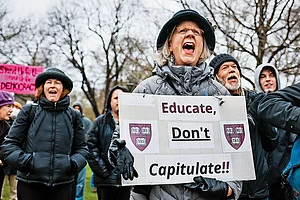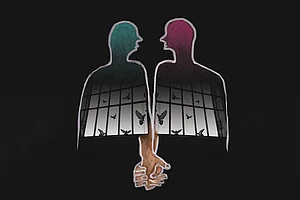Will American universities be able to retain their international character?
The brutal rape-murder of a junior doctor at Kolkata’s R G Kar Medical College and Hospital has an inescapable geography
BY Saikat Majumdar 21 August 2024
How does one teach the works of writers and thinkers who have abused their power or committed heinous crimes?
BY Saikat Majumdar 31 July 2024
The Remains of the Body is an intricate story of friendship and intimacy between three Indian immigrants in North America from a writer known for his exploration of the unpredictable nature of human sexuality. Two men in their mid-thirties, childhood friends, share a deep bond that is put to an unexpected test as one’s marriage starts to crumble under the conflicting arcs of immigrant ambition. As the marriage loses its last breath in an unexpected affair, the other friend, a single man, has to confront questions about his own desire that he cannot answer. Whose body does he long to touch? Can a man’s intimacy with a woman mask his inexpressible desire for someone who lies beyond his reach?
BY Saikat Majumdar 2 July 2024
What we have is a long-drawn situation of conflict between the fundamental interests of society. Reopening is going to be a long and uneven process, filled with fear and suspicion, more for some than for others.
BY Saikat Majumdar 18 August 2021
Students from the Northeast have seen new waves of clinical racial bias in other parts of India. Will students from India face racial prejudice overseas this fall? In an altered, fearful world, what does it mean for racism against students?
BY Saikat Majumdar 28 July 2021
Abruptly, the pandemic-induced cancellation of exams has pushed us towards the terrain of the future, where the importance of board exam results in college admission decisions will continue to diminish.
BY Saikat Majumdar 12 July 2021
In a plague year, what does it mean for a schoolteacher to be the foot solider for the election? Our poorest children have long paid the price of their teachers’ state-mandated absence. Now many of these teachers have paid the price with their lives.
BY Saikat Majumdar 23 June 2021
When school resumes, let’s not go back to our usual obsession with exams and syllabus. Let’s acknowledge the catastrophe around us and make it part of our children’s experience of growth, learning, and mental health.
BY Saikat Majumdar 17 May 2021
Removing mathematics, physics and chemistry as a basic pre-condition for an engineering course is a short-sighted measure that dilutes and erodes the discipline.
BY Saikat Majumdar 19 April 2021
Advertisement

Newsletter
Signup for Outlook and get curated content to your inbox everyday.










